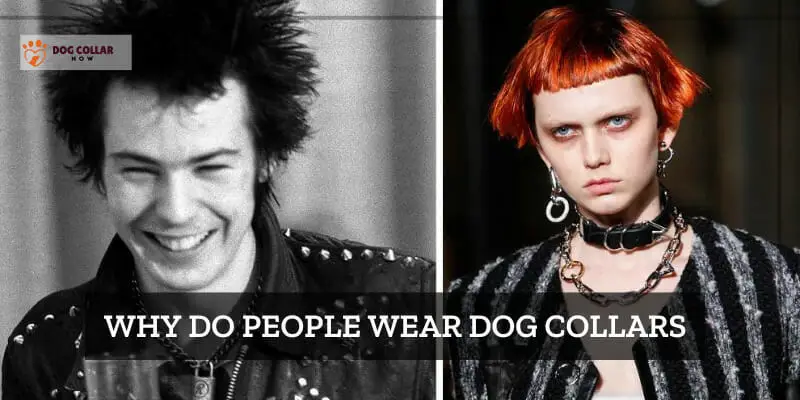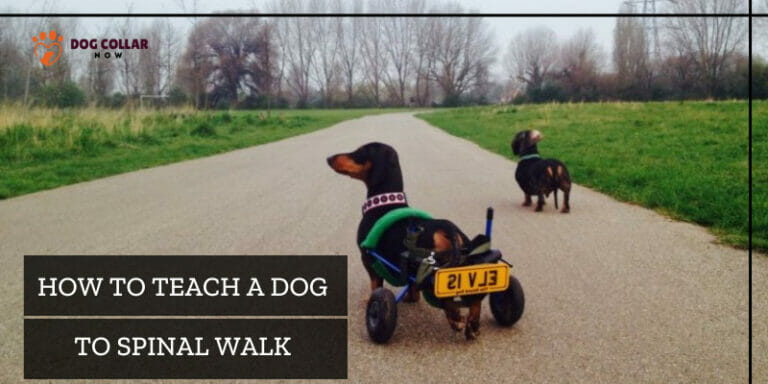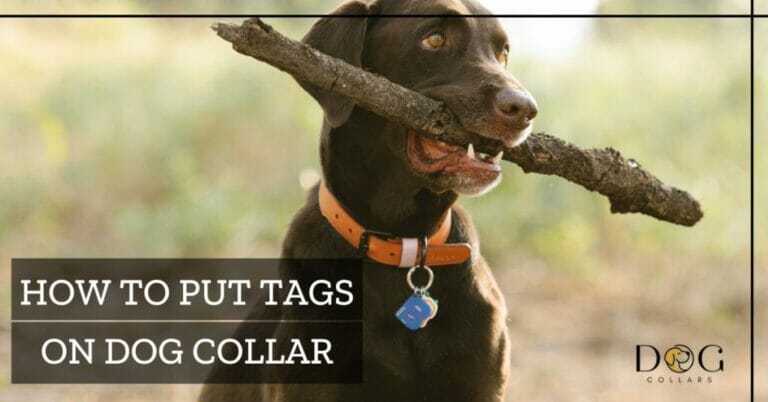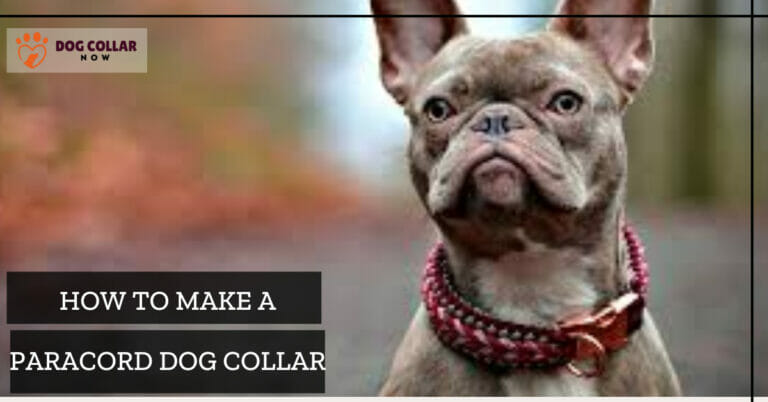Why Do People Wear Dog Collars – Interesting Fact

If you’ve ever wondered why people wear dog collars, you’re not alone. While it may seem like an unusual fashion statement or a strange choice of accessory. There are actually many reasons behind this trend.
From symbolic significance to personal expression and individual reasons, the world of dog collars is vast and varied.
Today, we’ll explore the history of dog collars, delve into the reasons why do people wear dog collars, discuss their benefits and drawbacks, and examine criticisms and controversies surrounding them.
All while keeping in mind that they’re not just animal chains worn around a pet’s neck! So if you want to know more about wearing a dog collar or even own one yourself – read on!
History of Dog Collars
The history of dog collars dates back to ancient civilizations such as Egypt and Greece, where they were used for both practical and decorative purposes. These early collars were made from leather, metal, or even shells, and adorned with hieroglyphs or other symbols.
During the Roman Empire, dogs wore collars with spikes to protect them from predators during hunting expeditions. In medieval Europe, a dog’s collar was an indication of its owner’s status. The finer the material and embellishments on the collar, the higher social rank the owner held.
As time passed by and societies evolved, so too did dog collars. They became more accessible to common people in different varieties like nylon webbing or neoprene materials. Dog tags also came into existence as a way to identify lost pets.
Today we have various types of dog collars ranging from choke chains for training purposes to electronic bark control devices that can be remotely operated by owners.
Regardless of why you choose a particular type of collar for your furry friend – whether it is for identification purposes or just fashion. It’s important to remember that these simple accessories have come a long way since their beginning!
Why Do People Wear Dog Collars – Reasons Behind
People wear dog collars for a variety of reasons, ranging from practical purposes to fashion statements and personal expression. Let’s delve into the different motivations behind wearing dog collars, exploring each reason in detail.
Identification and Safety:
Dog collars are commonly used to identify and keep track of dogs. Similarly, some individuals choose to wear dog collars with ID tags or personal information as a safety measure. This allows others to easily identify them and provide assistance in case of an emergency or if they become separated from their group.
Additionally, wearing reflective or LED collars can enhance visibility during nighttime activities, promoting personal safety in low-light conditions. By wearing a dog collar with identification and safety features, individuals prioritize their well-being and create an extra layer of protection for themselves.
Pet Play and BDSM Culture:
In certain subcultures, such as pet play and BDSM (Bondage, Discipline, Dominance, Submission, Sadism, Masochism) communities, individuals wear dog collars as part of their lifestyle or role-play. In these contexts, the collar represents a power dynamic, with the person wearing it taking on the role of a pet or submissive partner. While their partner assumes the dominant role. It serves as a symbol of ownership, trust, and power exchange within the relationship.
Fashion and Style:
Dog collars have made their way into fashion and personal style choices beyond their traditional uses. Some people simply appreciate the aesthetic appeal of dog collars and incorporate them into their outfits as accessories. They may opt for collars made of different materials, like leather or metal, and embellish them with decorative elements, such as studs, spikes, or personalized engravings. Wearing dog collars as a fashion statement allows individuals to express their unique style and add an edgy or alternative touch to their overall look.
Subcultural Affiliation:
Dog collars are often associated with certain subcultures, such as punk, goth, or alternative scenes. Within these communities, wearing dog collars can be a way to identify oneself and showcase belonging to a specific group. It serves as a symbol of shared interests, values, or aesthetics. By wearing a dog collar, individuals connect with like-minded individuals and express their affinity for a particular subculture.
Symbolism and Personal Expression:
Symbolism and personal expression play a significant role in wearing dog collars. Just like other forms of jewelry or accessories, collars can hold personal meaning for individuals. Some may view it as a form of self-expression, representing their individuality, rebellion against societal norms, or their connection with animals. It becomes a visual representation of their values, beliefs, or emotions.
Sensory Stimulation:
For some individuals, wearing a dog collar may provide sensory stimulation or comfort. The pressure or sensation of the collar around the neck can have a calming effect or create a sense of security. This is similar to the use of weighted blankets or other sensory tools used to manage anxiety or provide sensory feedback.
The reasons behind wearing dog collars vary from practical identification and safety purposes to fashion choices, subcultural affiliations, personal expression, and even sensory stimulation. Each individual’s motivations may differ. But it is clear that dog collars hold a multifaceted role in our society, serving functional, symbolic, and aesthetic purposes simultaneously.
Criticisms and Controversies
Criticisms and controversies surrounding people wearing dog collars exist due to various factors, including differing societal norms, cultural perspectives, and personal beliefs. It is important to note that these criticisms are subjective and may not reflect the views of all individuals. Here are some common criticisms and controversies associated with people wearing dog collars:
Societal Norms and Perception:
Wearing dog collars as a fashion statement or personal expression can be seen as unconventional or provocative by some individuals. It may go against societal norms and be perceived as attention-seeking or inappropriate. Critics argue that such attire can be viewed as overly sexualized, especially when associated with certain subcultures or BDSM practices. These viewpoints stem from cultural and social expectations regarding appropriate attire in different contexts.
Animal Rights and Ethics:
Critics raise concerns about humans appropriating dog collars as fashion accessories or symbols of subcultures. They argue that doing so may trivialize the collars’ purpose for actual dogs. This criticism stems from animal rights and ethics, emphasizing the importance of respecting and prioritizing animal well-being rather than objectifying their accessories for personal adornment.
Misrepresentation and Stereotypes:
The association of dog collars with subcultures like BDSM or alternative scenes can create stereotypes and misconceptions. People may make unfair judgments about a person’s character, interests, or intentions based solely on their choice of collar. Critics argue that these assumptions perpetuate stigma and prejudice.
Personal Safety Concerns:
Critics worry about the potential safety risks of wearing dog collars in public. They highlight that collars with spikes, studs, or other decorative elements may pose hazards to the wearer or those nearby. While aesthetics are important, critics emphasize the need to prioritize safety and avoid harm from sharp or protruding features.
It is essential to recognize that perspectives on wearing dog collars can vary widely, and not all criticisms are universally agreed upon. People’s motivations, intentions, and interpretations behind wearing dog collars differ greatly, and it is important to approach the topic with an understanding of individual autonomy and diverse perspectives.
Conclusion
Dog collars have evolved from being tools for control and identification to fashionable accessories worn by humans. They carry symbolic significance, reflect personal style, and allow for individual expression.
Wearing a dog collar offers benefits like safety during outdoor activities, but it’s crucial to be mindful of potential risks such as skin irritation or improper usage. While some criticize wearing dog collars due to their association with tools for animal behavior control. Many people choose to wear them out of love and admiration for their pets.
Ultimately, the decision to wear a dog collar is a personal one based on individual beliefs and preferences, as long as our furry companions are treated with love, care, and respect, regardless of what adorns their necks or ours.
FAQs:
But what about wearing a collar outside of a relationship?
Wearing a collar outside of a relationship can be a personal choice or a fashion statement that holds different meanings for individuals. It does not necessarily imply a specific relationship dynamic, such as dominance or submission, and can be purely for personal expression or aesthetic purposes.
Why do people wear dog collars in public?
People wear dog collars in public for various reasons, including fashion choices, personal expression, subculture affiliations, or simply as an accessory.
What does an O ring choker mean?
An O-ring choker is a collar or necklace with a circular metal ring. It is primarily a fashion accessory that can carry different meanings for individuals, ranging from personal style to subculture affiliation.
Should I wear a dog collar?
Whether or not to wear a dog collar is a personal decision based on your own preferences, style, and comfort.
What does a collar feel like?
The sensation of wearing a collar can vary depending on the type of material, fit, and personal sensitivity. Some people may find it comfortable and barely noticeable, while others may find it restrictive or unfamiliar at first. The specific experience of wearing a collar can differ from person to person.






